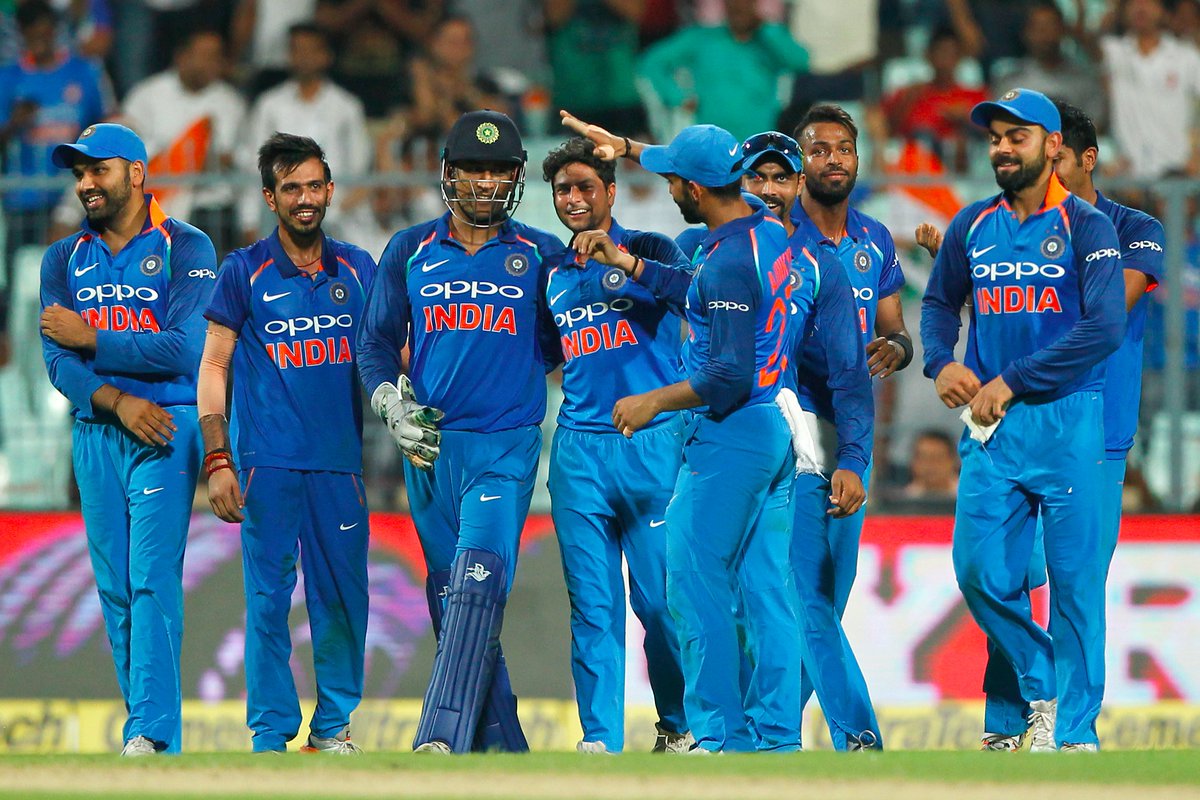India vs Australia | How and where India won the third ODI in Indore
India stuck to their calculative brand of cricket and with an all-round effort, took an unassailable series lead of 3-0. In the game, India didn’t deviate from their plans, despite getting off to a bad start, while Australia repeated their mistakes from the last match to lose the game.

Not bowling full balls to Indian openers cost Australia
In the first ODI in Chennai, where the ball was stopping before coming onto the bat, Australia dismissed the top three Indian batsmen with reasonably full-length deliveries due to the bounce and purchase off the wicket. In limited-overs cricket, while the good-length ball basically serves the purpose of not allowing the batsmen to open their arms, it doesn't create a lot of wicket-taking chances. By allowing the ball to land on the full-length area, a bowler forces the batsman to go for

 Ajinkya Rahane pitch map against Australia in Indore © BCCI
Ajinkya Rahane pitch map against Australia in Indore © BCCI
 © Rohit Sharma's pitch map against Australia in Indore © BCCI
© Rohit Sharma's pitch map against Australia in Indore © BCCIAustralia’s middle order succumb to the pressure yet again
In last two ODIs, despite Aussie bowlers questioning India’s home dominance, their batsmen failed severely and the team lost two matches from positions where they should have won. But the return of Aaron Finch, who was suffering from calf injury problems, and a belter of a strip at the Holkar Stadium were supposed to act as a balm to Australia’s headache, but what transpired in the middle-order towards the end of the innings was simply avoidable. After having scored 130 for the loss of just one wicket in the crucial 15th to 35th overs, the visitors allowed India to make a fantastic comeback, scoring only 87 runs in the last 15 overs. Despite Finch negotiating the wiles of Yuzvendra Chahal and Kuldeep Yadav well, their successors failed to understand their variations. Glenn Maxwell came out to bat in the 39th over, just after Finch's dismissal and was on the crease for just 4 overs when Smith cracked under pressure built up by dot balls, charged at a Kuldeep wrong 'un and miscued it to Bumrah at long-off. Then it was Maxwell's turn to take an unncessary risk by charging Chahal's delivery with Dhoni lurking just behind the stupms. He fell to the Haryana leggie for the third consecutive time in the series. Peter Handscomb and Travis Head, too, lost their wickets going for big hits at a time when they should have consolidated for at least an over or three.

 © BCCI
© BCCI
Bhuvneshwar Kumar and Jasprit Bumrah underline their importance
Jasprit Bumrah, as a bowler, brings a lot of things to the table. With immaculate judgment while bowling yorkers, slower balls and balls at conventional pace, he has grown into India's all-terrain bowler, who, with a slightly unorthodox action can make life difficult for the opposition. Alongside Bhuvneshwar Kumar, he forms a lethal attach with the new ball and old one. Today, despite the track being a benign one, they stuck to a tidy channel and didn’t offer the batsmen width to go for big shots. Both bowled largely back of length deliveries to Finch, denying him the chance to play down the ground shots. Kumar, also kept continuing bowling wicket-to-wicket straighter ones on short of good length to keep Warner and Finch guessing. Although they failed to pick any wicket in their first spell, the duo gave away only 39 runs for one wicket in the last six overs to keep Australia below 300.

 Bhuvneshwar Kumar stuck to a nagging line © BCCI
Bhuvneshwar Kumar stuck to a nagging line © BCCI
 Jasprit Bumrah didn't give any width to the Aussie batsmen © BCCI
Jasprit Bumrah didn't give any width to the Aussie batsmen © BCCIAustralia’s inability to understand Pandya
Hardik Pandya’s ability to hit big shots effortlessly makes him one of the finest prospects for team India. While other batsmen use their feet to gain momentum while going for big hoicks down the ground, Pandya doesn’t move his feet much before hitting them. That results in bowlers failing to predict his shots. In the Chennai ODI, Pandya creamed Adam Zampa for three consecutive sixes when the leg-spinner bowled flatter and fuller in the hope of making it difficult for the Baroda batsman to go for his shots. Today, he brought that to the fore again and this time, it was Ashton Agar, who was at the receiving end of his carnage. He hit four sixes off him and all of them were between the long-on and mid-wicket boundary. Agar would have gone slower and wider to him, but the lack of feet movement from Pandya kept the bowler guessing. To go with that, he also showed excellent maturity under pressure and wasn't afraid to play the big shot if he was confident enough to go for it.

Comments
Sign up or log in to your account to leave comments and reactions
0 Comments